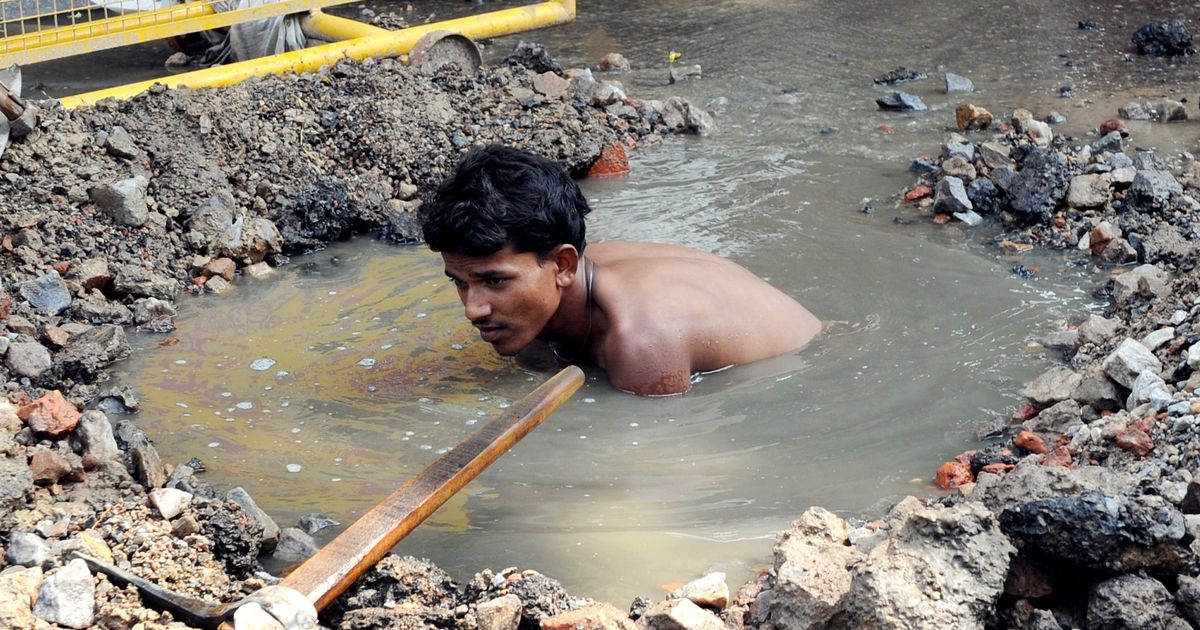Give directions to stop manual scavenging except under certain circumstances: Karnataka HC to state
The rule states that nobody should be permitted to clean sewers manually, with protective gear and safety devices, except under specific circumstances.

The Karnataka High Court on Wednesday suggested that the state government consider issuing a general direction to all agencies and authorities to ensure that no person is allowed to clean a sewer manually, except in certain circumstances of the scavenging act, Live Law reported.
A division bench of Chief Justice Abhay Oka and Justice Sachin Shankar Magadum asked the government to issue directions related to Rule 3 of the Prohibition of Employment as Manual Scavengers and their Rehabilitation Rules, 2013. “The state government shall also consider issuing a direction that whenever authorities appoint contractors, condition of complying with Rule 3, should be incorporated in the contract for work order,” the bench added.
The rule states that no person shall be permitted to clean sewers manually, with protective gear and safety devices, except under four circumstances.
The circumstances are:
- For the removal of concrete or fibre reinforced plastic or damaged manhole door where mechanical equipment cannot be put into operation.
- For interlinking newly laid sewer main with the existing sewer main, in case the size of sewer is more than 300 mm diameter.
- For removal of submersible pump sets fixed at the bottom of the suction wells.
- For the reconstruction of the manhole or rectification of the sewer main.
However, the rule also makes it clear that in these exceptional circumstances, manual scavenging can only be done after the chief executive officer of the local authority allows it by giving valid reasons for the permission and recording it in writing, according to The Hindu.
During the hearing, advocate Clifton D Rozario, appearing for the petitioner All Indian Central Council of Trade Unions, told the High Court that in the show cause notice issued by the authority to its officers, it is said that the deceased slipped into the manhole and passed away. “How can a showcause notice take this stand?” he asked.
The High Court agreed to the submission made by the advocate and directed the authorities to explain why it has said that the accident was because the deceased fell in the manhole.
In the earlier hearing, the High Court had directed the state government to produce the investigation report done by the police in the first information report registered in the death of two persons – Lal Ahmed and Rasheed Ahmed. Both the deceased, residents of Azadpur Road in Kalaburagi, were working as labourers with the Karnataka Urban Water Supply and Drainage Board and were allegedly made to do manual scavenging on January 28.
On the perusal of the report, the court found out that a Forensic Science Laboratory report has not been received and the police waiting for the opinion of the doctors on the final cause of death. The High Court then directed the state government to submit the report on March 1, when the case will be heard next.
The High Court had in its interim order passed earlier issued several directions to the state government and observed that there can be no dispute that our constitutional philosophy does not permit any form of manual scavenging.
“Right of a citizen to live with dignity is an integral part of the fundamental rights guaranteed to the citizens under Article 21 of the Constitution of India,” it had observed. “The preamble of the Constitution shows that the Constitution seeks to protect the dignity of an individual. There can be no dispute that manual scavenging is most inhuman and it infringes the fundamental rights guaranteed under Article 21.”









